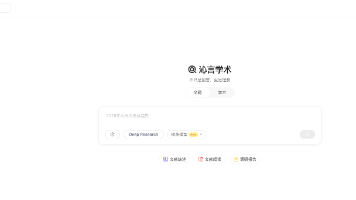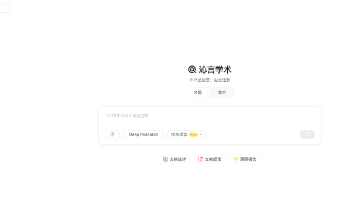蚁群算法原理及其实现(python)

1、蚂蚁在路径上释放信息素。
2、碰到还没走过的路口,就随机挑选一条路走。同时,释放与路径长度有关的信息素。
3、信息素浓度与路径长度成反比。后来的蚂蚁再次碰到该路口时,就选择信息素浓度较高路径。
4、最优路径上的信息素浓度越来越大。
5、最终蚁群找到最优寻食路径。
人工蚁群与真实蚁群对比:

基于TSP问题的基本蚁群算法:
TSP求解中,假设蚁群算法中的每只蚂蚁是具有以下特征的简单智能体:
每次周游,每只蚂蚁在其经过的支路(i,j)上都留下信息素。
‚蚂蚁选择城市的概率与城市之间的距离和当前连接支路上所包含的信息素余量有关。
ƒ为了强制蚂蚁进行合法的周游,直到一次周游完成后,才允许蚂蚁游走已访问过的城市(这可由禁忌表来控制)。
基本蚁群的两个过程:
(1)状态转移
(2)信息素更新
(1)状态转移
为了避免残留信息素过多而淹没启发信息,在每只蚂蚁走完一步或者完成对所有n个城市的遍历(也即一个循环结束)后,要对残留信息进行更新处理。
由此,t+n时刻在路径(i,j)上的信息量可按如下规则进行调整:

(2)信息素更新模型
蚁周模型(Ant-Cycle模型)
蚁量模型(Ant-Quantity模型)
蚁密模型(Ant-Density模型)
区别:
1.蚁周模型利用的是全局信息,即蚂蚁完成一个循环后更新所有路径上的信息素;
2.蚁量和蚁密模型利用的是局部信息,即蚂蚁完成一步后更新路径上的信息素。

蚁群算法基本流程:

蚁群算法中主要参数的选择:

蚁群算法中主要参数的理想选择如下:

国内外,对于离散域蚁群算法的改进研究成果很多,例如自适应蚁群算法、基于信息素扩散的蚁群算法等,这里仅介绍离散域优化问题的自适应蚁群算法。
自适应蚁群算法:对蚁群算法的状态转移概率、信息素挥发因子、信息量等因素采用自适应调节策略为一种基本改进思路的蚁群算法。
自适应蚁群算法中两个最经典的方法:蚁群系统(AntColony System, ACS)和最大-最小蚁群系统(MAX-MINAnt System, MMAS)。
蚁群系统对基本蚁群算法改进:
①蚂蚁的状态转移规则不同;

②全局更新规则不同;

③新增了对各条路径信息量调整的局部更新规则

下面是Python实现求50个城市之间最短距离的代码
# -*- coding: utf-8 -*-
import random
import copy
import time
import sys
import math
import tkinter #//GUI模块
import threading
from functools import reduce
# 参数
'''
ALPHA:信息启发因子,值越大,则蚂蚁选择之前走过的路径可能性就越大
,值越小,则蚁群搜索范围就会减少,容易陷入局部最优
BETA:Beta值越大,蚁群越就容易选择局部较短路径,这时算法收敛速度会
加快,但是随机性不高,容易得到局部的相对最优
'''
(ALPHA, BETA, RHO, Q) = (1.0,2.0,0.5,100.0)
# 城市数,蚁群
(city_num, ant_num) = (50,50)
distance_x = [
178,272,176,171,650,499,267,703,408,437,491,74,532,
416,626,42,271,359,163,508,229,576,147,560,35,714,
757,517,64,314,675,690,391,628,87,240,705,699,258,
428,614,36,360,482,666,597,209,201,492,294]
distance_y = [
170,395,198,151,242,556,57,401,305,421,267,105,525,
381,244,330,395,169,141,380,153,442,528,329,232,48,
498,265,343,120,165,50,433,63,491,275,348,222,288,
490,213,524,244,114,104,552,70,425,227,331]
#城市距离和信息素
distance_graph = [ [0.0 for col in range(city_num)] for raw in range(city_num)]
pheromone_graph = [ [1.0 for col in range(city_num)] for raw in range(city_num)]
#----------- 蚂蚁 -----------
class Ant(object):
# 初始化
def __init__(self,ID):
self.ID = ID # ID
self.__clean_data() # 随机初始化出生点
# 初始数据
def __clean_data(self):
self.path = [] # 当前蚂蚁的路径
self.total_distance = 0.0 # 当前路径的总距离
self.move_count = 0 # 移动次数
self.current_city = -1 # 当前停留的城市
self.open_table_city = [True for i in range(city_num)] # 探索城市的状态
city_index = random.randint(0,city_num-1) # 随机初始出生点
self.current_city = city_index
self.path.append(city_index)
self.open_table_city[city_index] = False
self.move_count = 1
# 选择下一个城市
def __choice_next_city(self):
next_city = -1
select_citys_prob = [0.0 for i in range(city_num)] #存储去下个城市的概率
total_prob = 0.0
# 获取去下一个城市的概率
for i in range(city_num):
if self.open_table_city[i]:
try :
# 计算概率:与信息素浓度成正比,与距离成反比
select_citys_prob[i] = pow(pheromone_graph[self.current_city][i], ALPHA) * pow((1.0/distance_graph[self.current_city][i]), BETA)
total_prob += select_citys_prob[i]
except ZeroDivisionError as e:
print ('Ant ID: {ID}, current city: {current}, target city: {target}'.format(ID = self.ID, current = self.current_city, target = i))
sys.exit(1)
# 轮盘选择城市
if total_prob > 0.0:
# 产生一个随机概率,0.0-total_prob
temp_prob = random.uniform(0.0, total_prob)
for i in range(city_num):
if self.open_table_city[i]:
# 轮次相减
temp_prob -= select_citys_prob[i]
if temp_prob < 0.0:
next_city = i
break
# 未从概率产生,顺序选择一个未访问城市
# if next_city == -1:
# for i in range(city_num):
# if self.open_table_city[i]:
# next_city = i
# break
if (next_city == -1):
next_city = random.randint(0, city_num - 1)
while ((self.open_table_city[next_city]) == False): # if==False,说明已经遍历过了
next_city = random.randint(0, city_num - 1)
# 返回下一个城市序号
return next_city
# 计算路径总距离
def __cal_total_distance(self):
temp_distance = 0.0
for i in range(1, city_num):
start, end = self.path[i], self.path[i-1]
temp_distance += distance_graph[start][end]
# 回路
end = self.path[0]
temp_distance += distance_graph[start][end]
self.total_distance = temp_distance
# 移动操作
def __move(self, next_city):
self.path.append(next_city)
self.open_table_city[next_city] = False
self.total_distance += distance_graph[self.current_city][next_city]
self.current_city = next_city
self.move_count += 1
# 搜索路径
def search_path(self):
# 初始化数据
self.__clean_data()
# 搜素路径,遍历完所有城市为止
while self.move_count < city_num:
# 移动到下一个城市
next_city = self.__choice_next_city()
self.__move(next_city)
# 计算路径总长度
self.__cal_total_distance()
#----------- TSP问题 -----------
class TSP(object):
def __init__(self, root, width = 800, height = 600, n = city_num):
# 创建画布
self.root = root
self.width = width
self.height = height
# 城市数目初始化为city_num
self.n = n
# tkinter.Canvas
self.canvas = tkinter.Canvas(
root,
width = self.width,
height = self.height,
bg = "#EBEBEB", # 背景白色
xscrollincrement = 1,
yscrollincrement = 1
)
self.canvas.pack(expand = tkinter.YES, fill = tkinter.BOTH)
self.title("TSP蚁群算法(n:初始化 e:开始搜索 s:停止搜索 q:退出程序)")
self.__r = 5
self.__lock = threading.RLock() # 线程锁
self.__bindEvents()
self.new()
# 计算城市之间的距离
for i in range(city_num):
for j in range(city_num):
temp_distance = pow((distance_x[i] - distance_x[j]), 2) + pow((distance_y[i] - distance_y[j]), 2)
temp_distance = pow(temp_distance, 0.5)
distance_graph[i][j] =float(int(temp_distance + 0.5))
# 按键响应程序
def __bindEvents(self):
self.root.bind("q", self.quite) # 退出程序
self.root.bind("n", self.new) # 初始化
self.root.bind("e", self.search_path) # 开始搜索
self.root.bind("s", self.stop) # 停止搜索
# 更改标题
def title(self, s):
self.root.title(s)
# 初始化
def new(self, evt = None):
# 停止线程
self.__lock.acquire()
self.__running = False
self.__lock.release()
self.clear() # 清除信息
self.nodes = [] # 节点坐标
self.nodes2 = [] # 节点对象
# 初始化城市节点
for i in range(len(distance_x)):
# 在画布上随机初始坐标
x = distance_x[i]
y = distance_y[i]
self.nodes.append((x, y))
# 生成节点椭圆,半径为self.__r
node = self.canvas.create_oval(x - self.__r,
y - self.__r, x + self.__r, y + self.__r,
fill = "#ff0000", # 填充红色
outline = "#000000", # 轮廓白色
tags = "node",
)
self.nodes2.append(node)
# 显示坐标
self.canvas.create_text(x,y-10, # 使用create_text方法在坐标(302,77)处绘制文字
text = '('+str(x)+','+str(y)+')', # 所绘制文字的内容
fill = 'black' # 所绘制文字的颜色为灰色
)
# 顺序连接城市
#self.line(range(city_num))
# 初始城市之间的距离和信息素
for i in range(city_num):
for j in range(city_num):
pheromone_graph[i][j] = 1.0
self.ants = [Ant(ID) for ID in range(ant_num)] # 初始蚁群
self.best_ant = Ant(-1) # 初始最优解
self.best_ant.total_distance = 1 << 31 # 初始最大距离
self.iter = 1 # 初始化迭代次数
# 将节点按order顺序连线
def line(self, order):
# 删除原线
self.canvas.delete("line")
def line2(i1, i2):
p1, p2 = self.nodes[i1], self.nodes[i2]
self.canvas.create_line(p1, p2, fill = "#000000", tags = "line")
return i2
# order[-1]为初始值
reduce(line2, order, order[-1])
# 清除画布
def clear(self):
for item in self.canvas.find_all():
self.canvas.delete(item)
# 退出程序
def quite(self, evt):
self.__lock.acquire()
self.__running = False
self.__lock.release()
self.root.destroy()
print (u"\n程序已退出...")
sys.exit()
# 停止搜索
def stop(self, evt):
self.__lock.acquire()
self.__running = False
self.__lock.release()
# 开始搜索
def search_path(self, evt = None):
# 开启线程
self.__lock.acquire()
self.__running = True
self.__lock.release()
while self.__running:
# 遍历每一只蚂蚁
for ant in self.ants:
# 搜索一条路径
ant.search_path()
# 与当前最优蚂蚁比较
if ant.total_distance < self.best_ant.total_distance:
# 更新最优解
self.best_ant = copy.deepcopy(ant)
# 更新信息素
self.__update_pheromone_gragh()
print (u"迭代次数:",self.iter,u"最佳路径总距离:",int(self.best_ant.total_distance))
# 连线
self.line(self.best_ant.path)
# 设置标题
self.title("TSP蚁群算法(n:随机初始 e:开始搜索 s:停止搜索 q:退出程序) 迭代次数: %d" % self.iter)
# 更新画布
self.canvas.update()
self.iter += 1
# 更新信息素
def __update_pheromone_gragh(self):
# 获取每只蚂蚁在其路径上留下的信息素
temp_pheromone = [[0.0 for col in range(city_num)] for raw in range(city_num)]
for ant in self.ants:
for i in range(1,city_num):
start, end = ant.path[i-1], ant.path[i]
# 在路径上的每两个相邻城市间留下信息素,与路径总距离反比
temp_pheromone[start][end] += Q / ant.total_distance
temp_pheromone[end][start] = temp_pheromone[start][end]
# 更新所有城市之间的信息素,旧信息素衰减加上新迭代信息素
for i in range(city_num):
for j in range(city_num):
pheromone_graph[i][j] = pheromone_graph[i][j] * RHO + temp_pheromone[i][j]
# 主循环
def mainloop(self):
self.root.mainloop()
#----------- 程序的入口处 -----------
if __name__ == '__main__':
print (u"""
--------------------------------------------------------
程序:蚁群算法解决TPS问题程序
作者:许彬
日期:2015-12-10
语言:Python 2.7
--------------------------------------------------------
""")
TSP(tkinter.Tk()).mainloop()
更多推荐
 已为社区贡献2条内容
已为社区贡献2条内容










所有评论(0)